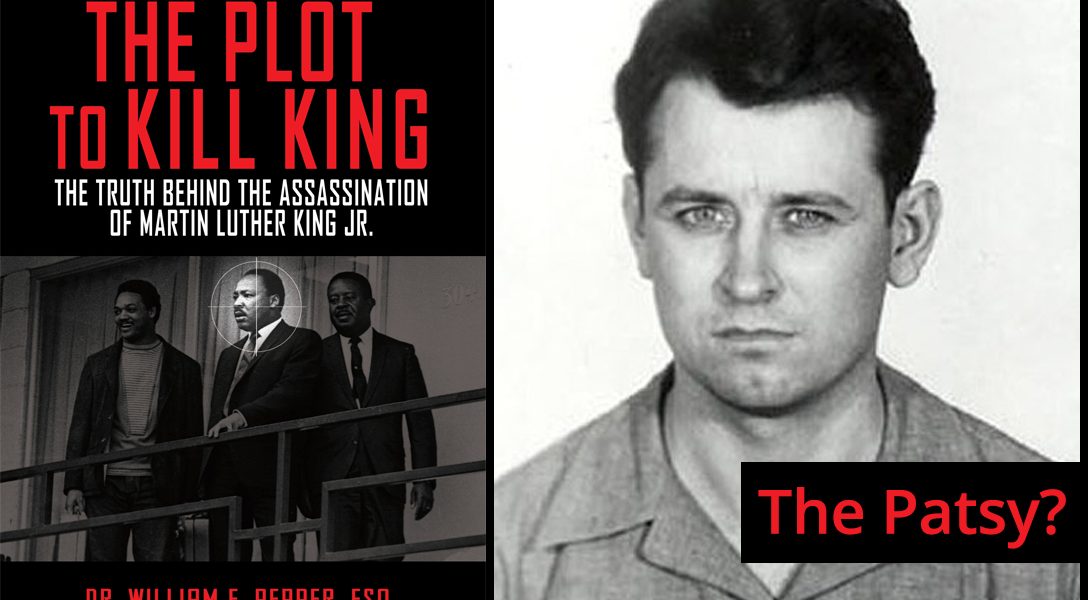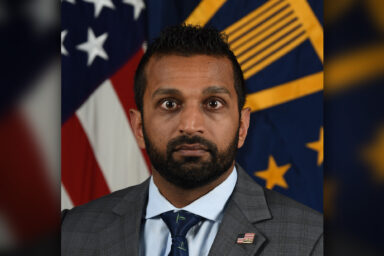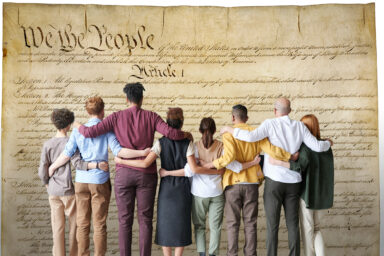The Plot to Kill King
A Look at Who Really Killed Martin Luther King
William Pepper, who's devoted most of his life to uncovering the truth of the King assassination, recaps the events and players that came together at the Lorraine Motel 50 years ago today.
The evidence that James Earl Ray did not kill Martin Luther King is overwhelming. As the Washington Post recently pointed out, famed attorney William Pepper stands astride all of the information and work that has uncovered the truth.
Pepper was a friend of King in the last years of his life. Some years after King’s death, Pepper went on to represent James Earl Ray in his guilty plea and subsequent conviction. But Pepper believes that Ray was framed by the FBI, the CIA, the military, the Memphis police, and organized crime figures from New Orleans and Memphis.
In this WhoWhatWhy podcast, William Pepper talks to Jeff Schechtman about the totality of the case. He tells of his initial interview with Ray, 40 years ago, and why it became clear to him right away that Ray was innocent. Pepper explains that Ray had no motive for the shooting, that he acted at the direction of his handler, a man named “Raoul,” with clear ties to Hoover and the FBI.
Pepper explains how, over the years, the evidence has mounted about Hoover’s hatred of King, which lay behind the FBI’s unending surveillance of King and the entire civil rights movement, and why Hoover sent his number two man, Clyde Tolson, to Memphis to help oversee the assassination of King and to help set up Ray as the patsy.
It’s a story that actually begins a half century ago today, in a hospital emergency room in Memphis. Pepper thinks it’s possible that King did not die from the gunshot wound — but that he was actually murdered in that emergency room.
William F. Pepper is the author of The Plot to Kill King: The Truth Behind the Assassination of Martin Luther King, Jr. (Skyhorse Publishing, January 16, 2018).
RELATED: Classic Who: Martin Luther King Also Had a Nightmare
Click HERE to Download Mp3
| Jeff Schechtman: | Welcome to Radio WhoWhatWhy. I’m Jeff Schechtman. As the very mainstream Washington Post pointed out in a long article this week, the mystery surrounding the death of Dr. Martin Luther King, and whether or not James Earl Ray acted alone is not just the stuff of conspiracy theory. The evidence proving Ray’s innocence is substantial and the legal arguments powerful and compelling, and their consistency over 50 years of debate is remarkable, especially given that we still don’t have a definitive answer. |
| What is clear though, is that no one understands all of this better than my guest, William Pepper. William Pepper is a lawyer who has represented governments throughout the world. He was a friend of Martin Luther King in the last years of his life. In the years after King’s death, Pepper went on to represent James Earl Ray and his guilty plea and subsequent conviction. | |
| Pepper believes that Ray was framed by the FBI and the CIA and the military, the Memphis Police, and organized crime figures in New Orleans and Memphis. He represented the King family in a wrongful death civil trial, and he continues to work tirelessly to prove James Earl Ray’s innocence. | |
| He’s the author of three books about the case. The latest is The Plot to Kill King. It is my pleasure to welcome William Pepper here to the program. | |
| Bill, thanks so much for joining us here on Radio WhoWhatWhy. | |
| William Pepper: | You’re welcome. Thank you, thank you. It’s a pleasure to be with you. |
| Jeff Schechtman: | I want to go back a little bit for people that may not be familiar with all of this, and talk a little bit about how you came into this initially, how you got involved in this case, and got involved with Ray originally. |
| William Pepper: | Well, after they assassinated Martin Luther King, I was basically through with politics. I’d had it. I thought they had the right guy, I didn’t really look twice at that. For nine years I was on doing other things, creating experimental schools, writing about them, things of that sort. It was Abernathy and I having a conversation in ‘77, where he asked me to go to the prison and interrogate Ray in front of him so that he could be satisfied. |
| I was taken aback. I said, “What’s the matter, Ralph? Don’t you believe that they got the right guy?” He said he didn’t know, but he had some questions, so Ralph had another agenda though. But however, I did that in 19 August of ‘78. Took me quite a while to prepare, because I knew nothing about the minutiae of the case. | |
| I interrogated James for five hours in front of Ralph, Reverend Lawson, Jim Lawson was there and of course James was his lawyer at the time. Mark Lane was there, and I brought a body language specialist, psychiatrist from Cambridge, Massachusetts, Howard Bennett was there. We went through five hours of ruthless… it was very stressful for James. When it was over, we all met outside. We were of one opinion, and that was that he was not the shooter. | |
| Now, we didn’t know what role he might have played, but at that point in time, we knew he wasn’t the shooter. | |
| Jeff Schechtman: | What was it in his testimony? What was it in your questioning of him that led you all to believe that? |
| William Pepper: | His total lack of knowledge of rifles, guns, and how to use them. His almost innocence in terms of the facts of the case and his detailed explanation of where he was at the time of the killing and why he was there. He was at a gas station trying to get a flat spare tire changed when the sirens started sounding. It was clear that that’s where he was. Two people who came out of Jim’s Grill, in front of which he was parked, which was a grill and restaurant on the ground floor of the rooming house where he had been told by his handler Raoul, to rent a room, which he did, and leave his belongings, which he did. |
| These two fellas who were coming out saw the mustang, took note of it, and then a couple of blocks later, when they were crossing [?00:04:58] Street, here comes the same mustang right around the corner with James driving it. This was really about 10 minutes before the killing. | |
| The circumstantial evidence tended to point away from his involvement. He came back down when he heard the sirens, was waved off, and then he took off and he headed toward Atlanta. It was that, his demeanor, and his absolute absence of any motive for killing Martin Luther King. Even as we tried to find it, there wasn’t one there. Blakey of the House Select Committee likes to say: “Oh, he was looking for a bounty that was put on Martin King’s head by a group out of St. Louis.” Well, he was looking for nothing of the sort. He was not there, he was under the control of the handler Raoul, who moved him around and kept him, really kept him very much under control for the most part. | |
| Jeff Schechtman: | Talk a little bit about the gun, where the gun was found, and his fingerprints on it. |
| William Pepper: | Well, he was told by Raoul, his handler, to purchase a gun when they were in Birmingham, and so he went into a gun store, and he bought a gun. Bought a .35 caliber rifle, and he brought it back to the motel where Raoul was very angry with him. He said, “That’s not the rifle I told you to get. That’s not the Gamemaster I told you to get.” So he took out a catalog and he showed him the catalog, and he pointed to the one that he wanted. So James was back with the gun, because he got the, for whatever reason, he got the wrong gun, right? |
| Well, we know he got the wrong gun, because it had to match up with the actual murder rifle that was going to be used. Anyway, he got the second gun and he drove that night to a motel outside of Memphis. Raoul showed up. He gave him the gun, and he never saw it again. Raoul took the gun. | |
| Now the gun was, it got, had his fingerprints on it because he had handled it. But the gun was in … found in a bundle of things that were dropped in front of Canipe’s store and the story of the police is that after shooting from the bathroom window, he went in through, grabbed his stuff, and ran through the hallway, down the stairs, and as he got out on the street, he saw a police station wagon parked in the fire department’s parking area, pulled close up to the curb and so he panicked and he dropped the bundle. Then he got into the mustang and drove away. | |
| Well, when I started to look into these things that related to the official story, I found out that well, the next morning, the public works department had been brought in to clean up the entire area behind the rooming house. It was a crime scene. They cleaned it up entirely so that it could never appear that someone could be there without being noticed from the street. They cut down all the bushes. They cut down the bushes between the fire station and a vacant lot that when they were grown would have made it impossible for James to see any car and panic. So, they had to cut them down because then he could have seen the car, so they altered that scene as well. We took photographs of all of those bushes being cut down. | |
| Then I found a witness named James McCraw, who was a taxi driver. Now, James had been called by a roommate up in the second floor, the room next to James, named Charlie Stevens, he had been called for his taxi services. So, he went there and he went there about, oh, must have been about ten to six, somewhere in that area as well and as he climbed the stairs, he saw the bathroom door, which was right in front of the top of the stairs. The bathroom door was open, and the light was on and no one was in there. | |
| He went to see, to take his passenger, and he found that he was dead drunk, so he decided he couldn’t take him obviously, so he went out and he went back down the stairs. The bathroom door was still open, and no one was in there. No one at all. It was now pushing on five to six, so their opinion was that James had fired the rifle from that bathroom window. That clearly, that clearly gave us a lot of problems when the bathroom was empty, door was open, light was on, and the windowsill inside the bathroom that we saw was jabbed at about four inches. So, it would have been very difficult… he would’ve gotten the rifle out, but not the scope. It would have hit the window ledge. So that didn’t make any, that didn’t make any sense at all. The only thing that made sense was that the shot came from the bushes. | |
| Eventually, I had a witness named Betty Spades who was involved romantically with Loyd Jowers, who owned Jim’s Grill, and Loyd, after the shot, Betty came out looking for him, into the grill, into the kitchen, she saw the backdoor open, which was unusual. But, then she saw Loyd come running with a still smoking gun and he broke it down in front of her and wrapped it in a towel and said, “You wouldn’t ever do anything to hurt me, Betty, would you?” She said, “No, of course, Loyd, of course I wouldn’t.” Well, this was 1968. 1994, I finally broke her down, and she told the whole story about Loyd’s involvement and that helped with other things to give us a main defendant for the 1999 trial. | |
| Jeff Schechtman: | What do we know about Raoul? |
| William Pepper: | Well, we know that he was a Portuguese immigrant, worked for Portuguese Military Intelligence mostly in Africa, Angola in particular. That he came to the United States around 1959, and he was brought in in 1959. That he was in [inaudible 00:11:53], he got a home in Yonkers, New York, would you believe my hometown, in Yonkers, New York. He was given a job with the General Motors plant in North Tarrytown, for which he could have sent himself whatever he needed to. It was an assembly line job, whatever he needed to have sent himself, he could do that. |
| He was a clever, cutting character, who was known to Gloria [Grabow? =Glenda Grabow? :12:29?], and some other witnesses we discovered in Houston and the Dallas area. He was seen frequently with Jack Ruby, so he was known to Ruby. He was known to all of Ruby’s girls, so they saw him in the club with Ruby. | |
| He had a range of those kinds of connections, and his job was to take control of James, move him around, keep him where they needed him for the profile, for using him, for a patsy. So, he had him in Los Angeles for a period of time. They were initially going to hit Martin King in Los Angeles. They changed that. The last minute, the military snipers, spotters were moved out and James himself was moved out. All of them had been there for quite a period of time, but they moved out. | |
| It was a puzzle to everyone, and then I realized that they had that decision, somewhere along the way had been made to take Bob Kennedy out after he won the California primary, which is what he was expected to do and what he did do. They couldn’t have two assassinations within a short period of time in the city of Los Angeles. So they moved this group into Memphis where they had everything they needed. | |
| They had [Brian?Colliman? 00:13:56] put in as head of fire and police. He had worked in Hoover’s office for a number of years, was very close to Hoover. Hoover had a very close relationship with the Dixie Mafia, who were based in the Memphis area, and the Russell Adkins group were very powerful associates of Marcelo, but local, that’s why they’re Dixie Mafia, local guys. They were masons, they were clansmen, all of Marcelo’s people were not clansmen, but the Dixie Mafia guys were all clansmen, as well as being Masons. | |
| They did a lot of, obviously, a lot of dirty work for Hoover. Clyde Tolson had a witness, the Adkins family. The youngest son, who finally decided to tell all, was an incredible witness. Tolson came in many times. He was told to call Tolson ‘Uncle Clyde’. He was liaising with the old Russell Adkins on the details of the assassination. This was a Hoover-Tolson operation. Tolson would come in regularly. I have photographs of Tolson with the Adkins family. | |
| Jeff Schechtman: | Talk a little bit about why Ray fled, went to Atlanta as you mentioned before, then we he went to Canada, he went to the UK, and ultimately, why he pled guilty. |
| William Pepper: | James Earl Ray’s escape was arranged by Hoover. That was not, that’s not generally known, and it was never known by James either. He didn’t know that, he just, he was given an opportunity. He saw it and he took advantage of it. |
| Hoover sent Tolson, Clyde… everybody should know, Clyde Tolson, he was Hoover’s number two, as well as being his lover. Clyde Tolson came in with instructions and $25,000 in cash. That $25,000 in cash was taken to the prison and given to the warden. We know that because Russell Adkins’ son John, who became my witness under oath, John rode — at that point he was only 16 — he rode along with his father to the prison while they gave the warden the money to organize James’ escape. | |
| James did escape. He had a determination to get out of North America, not just the United States, but North America. He wanted to go off to Africa, and so he stopped along the way to work, but he worked one job or another as he made his way north. Eventually, he went to the port in Montreal, after he was given an alias. He was given the alias Eric S. Galt, because Galt worked as a… was in charge of a warehouse that had a high classified weapons materials and if he was, if James was ever stopped, he had the identification of Galt, he would be able to be released immediately. | |
| So he got the alias, then he went over to Montreal and it was there that it was set that he met Raoul, where Raoul promised him travel papers and the ability to get on a ship and get out. But first, Raoul wanted him to do some things. He wanted him to do some minor smuggling for him, from Canada to the United States, then the United States into Mexico and back and forth and James did all this. Raoul gave the money for a car, he bought a car, bought the white mustang, and he did all of these things and he moved around. He went exactly where Raoul told him to go and stayed there as long as he had to stay there. | |
| He was in Montreal initially with Raoul, and then after a period of time, after the actual assassination, he kind of realized that he was being set up, because he was at the gas station having the tire repaired, but it wasn’t repaired, they had to wait in line, when he heard the sirens. He came back down and he saw the police everywhere, and being an escaped convict, he took off. That’s when he made up his mind really to go, finally, to go straight into Canada and he had broken with Raoul. He had thought he had been maybe set up by Raoul. So off he goes and he makes his way to the UK, tries to get over to go into, to go from another European port city into Africa, failed at that, came back to the UK, and that’s when he was picked up by the police and they detained him, then they extradited him. Believe it or not, they extradited him on the warrant of Charlie Stevens. Remember him? He was the drunk tenant, who James McCray refused to take because he was dead drunk and knocked out. | |
| He somehow was revitalized. He saw, he identified Ray, and he knew there was a reward. I think that was part of the inducement. So he was caught. He had the two Hanes, father and son, as his lawyers. They were determined to go to trial. Percy Foreman came out from Texas, the famous criminal lawyer, came up from Texas, talked his brother Jerry into getting James to fire the Hanes brothers, take Percy on because he was a bigger name and Percy at first talked the game. He was going to take him to trial. Then that started to wane. It started to go down. | |
| Finally, the end of the day, Percy said to James, “James, I can’t give you your best defense because I’m not in good health.” When he said that to James, James knew that this guy was going to throw the case because all of a sudden, he had started talking to him about pleading guilty in order to save his life from an execution. | |
| Percy proceeded to, I guess, [parage? barrage? 20:49] James with the reasons why he should plead guilty to save his life and James, you know, was very confused. Finally, Percy said, “I’ll give you $500. If you plead guilty, I’ll give you $500. I’ll give it to your brother. Your brother can then go and hire a new lawyer after the guilty plea, set it aside, and you can have your trial.” That was what Percy Foreman did, and he wrote the check for $500 and I have the letter that goes with the check that showed that he was buying his client’s plea, effectively. | |
| So that’s why James pleaded and of course, he did try to set it aside after he was guilty, but that as you may imagine, is an endless, difficult, and virtually impossible task. He was not allowed to do that, and he was still in jail. When I finally decided to represent him in 1988 — it was 10 years after I got involved with the case — I became convinced that he was an unknowing patsy. I had to be convinced of that, and I was convinced of that. So I took him on as a client and represented him from ‘88 to ‘98, until he died. We tried desperately. We went all the way again to the Supreme Court. We tried a mock trial, with jurors from all over the country and anonymously chosen and, it was a trial sponsored by HBO and Thames Television and former US Attorney Hickman Ewing as a prosecutor and myself as lead defense counsel. | |
| It took the jury seven hours to find on the basis of the slim evidence we had in 1993, it took the jury seven hours to find him not guilty. This all … we at least accomplished that, but what it brought was enormously new evidence, new witnesses, new people come out. I did the first book in ‘95, and the second book after the civil trial. When James died, and we had nowhere to go in the American judicial system, but to start all over again, we decided on a civil trial when the King family sued Loyd Jowers, who we had boxed into admitting his involvement in the killing, and he was led to believe by his lawyer, that if he cooperated with us and the King family — I was representing the King family — that he was likely to get a very lenient sentence for anything that he had done. | |
| So Jowers confessed everything, no, not everything, but mostly everything, to myself and Dexter King and then to Dexter and Andrew Young. So, we went into the civil trial in ’99. It took that jury — we had a trial that went on with 70 witnesses, 30 days — took that jury 59 minutes to find that agents of the government of the United States, state of Tennessee, city of Memphis, were responsible for the liability of the assassination of Martin Luther King. Loyd Jowers had a minor liability. James Earl Ray had none. | |
| Jeff Schechtman: | Finally, when did it become clear, the degree to which the FBI had been surveilling King and those around him for so long and the degree to which they were doing it? |
| William Pepper: | Well, it became evident to me when I had eyewitness testimony of Clyde Tolson coming in with instructions from Hoover and bags of money that were placed in the Adkin’s table in their workshop with names of informants like Billy Kyles on it and finally, when the witness gave me the complete story of the Adkins family involvement and slowly, and slowly we got the final proof of how Martin King died. He didn’t die from the bullet wound. He was injured. He was taken into the emergency room, and the head of neurosurgery, named Dr. Breen Bland came in at one time when they were working on him and said, “Stop working on that nigger and let him die.” He had two men in suits with him. “Now get out of here, all of you.” He cleaned the emergency room out. And as she was going out, a surgical nurse heard them gathering spit up in their mouth and at the corner as she she turned around, she saw the three of them spit on his body. |
| Then she saw Dr. Bland take the pillow and put it over his face and head and suffocate him to death and he was still alive when Bland did that. Now, that’s just one witness. You usually need two. Well, the second one was the son of Russell Adkins. Breen Bland was the family doctor of the Adkins family and John, Tyler Adkins told me he was, he attended a meeting two to three weeks before the assassination, where Bland told his older brother: “Make sure if the bullet doesn’t kill him, to take him to St. Joseph’s hospital and we’ll make sure that he doesn’t leave there alive.” So that was an independent corroboration of Bland’s intention and he carried it out, late on the day on April 4, and made sure that Dr. Martin Luther King was dead. | |
| Now Martin King might have died anyway from the bullet wound. That’s not clear. He was severely injured. But they weren’t taking any chances. They had to make sure that he was dead when he left that emergency room, that he left it as a corpse. | |
| Jeff Schechtman: | William Pepper, his latest book is The Plot to Kill King. Bill, I thank you so much for spending time with us today. I really appreciate it. |
| William Pepper: | You’re welcome. My good wishes to you, Russ Baker, all of you, and for the good work you’re doing. |
| Jeff Schechtman: | Thank you. And thank you for listening and for joining us here on Radio WhoWhatWhy. I hope you join us next week for another Radio
WhoWhatWhy podcast. I’m Jeff Schechtman. |
| If you like this podcast, please feel free to share and help others find it by rating and reviewing it on iTunes. You can also support this podcast and all the work we do by going to whowhatwhy.org/donate. |
Related front page panorama photo credit: Adapted by WhoWhatWhy from poster (FBI / Wikimedia), pointing (Mr. Littlehand / Flickr – CC BY 2.0) and William Francis Pepper (WilliamPepper.com).






